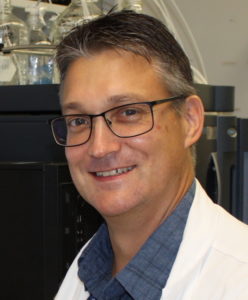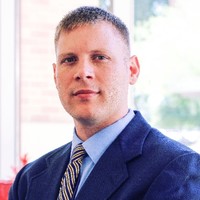Alan Diekman, Ph.D.
Professor
Department of Biochemistry and Molecular Biology
Department of Urology
UAMS College of Medicine
Research Interest Statement
Research in the Diekman laboratory focuses on galectin-3, a carbohydrate-binding protein, in cancer and normal male reproductive function. Galectin-3 is implicated in the progression of multiple cancers, including prostate and breast cancer. Previously, we investigated the interactions of galectin-3 with prostate specific antigen (PSA), which is mainly known as a screening marker for prostate cancer. PSA is a serine protease that is secreted into semen where it functions as a proteolytic enzyme. PSA function during local and metastatic prostate cancer has also been proposed. We were the first to demonstrate that galectin-3 is a proteolytic substrate for PSA and investigated the function regulation of galectin-3 by PSA. We developed a novel strategy to purify PSA for these studies. Significantly, polymorphisms (SNP) in the coding region of the human galectin-3 gene create amino acid polymorphisms in the galectin-3 protein, and genotype analysis indicated that these SNPs are associated with increased odds of prostate cancer. We currently are investigating the impact of these amino acid polymorphisms on the molecular function of galectin-3. We anticipate that elucidation of the functional aspects of galectin-3 phenotypic variation relevant to disease etiology and pathology will contribute to development of individualized, precision medicine strategies to improve cancer prevention and treatment.
Dr. Diekman’s Cancer-related Grants
UAMS Executive Breast Committee: AWD00051704
Alan Diekman: PI
Title “Galectin-3 Genetic and Phenotypic Polymorphism in Breast Cancer”
09/1/2016 – 08/31/2020
$75,000*
*cancer-related direct cost
Dr. Diekman’s UAMS Collaborators
Alicia Byrd, Ph.D., Department of Biochemistry and Molecular Biology, College of Medicine
Joseph Su, Ph.D., M.P.H., Department of Epidemiology, College of Public Health
Opportunities for Collaboration
I have expertise in biochemistry, reproductive biology and glycobiology and am always interested in collaborating with colleagues. My research is focused on the role of carbohydrate-binding proteins in prostate cancer, but my interests extend to other cancers, including breast and colorectal cancer.
You May Not Know That …
I am the proud owner of a 1923 arts and crafts airplane bungalow in Hillcrest, but something always needs to be fixed. My hobbies include physical fitness, science fiction and annoying my children with dad jokes.
Recent Cancer-related Publications
Saraswati, S., Block, A.S., Davidson, M.K., Rank, R.G., Mahadevan, M., Diekman A.B. (2011) Galectin-3 is a substrate for prostate specific antigen (PSA) in human seminal plasma. The Prostate 71:197-208, DOI: 10.1002/pros.21236. PMCID: PMC3606048.
Kovak M.R., Saraswati S., Goddard, S., Diekman A.B. (2013) Proteomic identification of galectin-3 binding ligands and characterization of galectin-3 proteolytic cleavage in human prostasomes. Andrology 1:682-691, PMCID: PMC4180284.
Bailey, L.A., Jamshidi-Parsian A., Patel T., Koonce N.A., Diekman A.B., Cifarelli .P., Marples B., Griffin R.J.: (2015) Combined temozolomide and ionizing radiation induces galectin-1 and galectin-3 expression in a model of human glioma. Tumor Microenvironment and Therapy 2:19-31.






